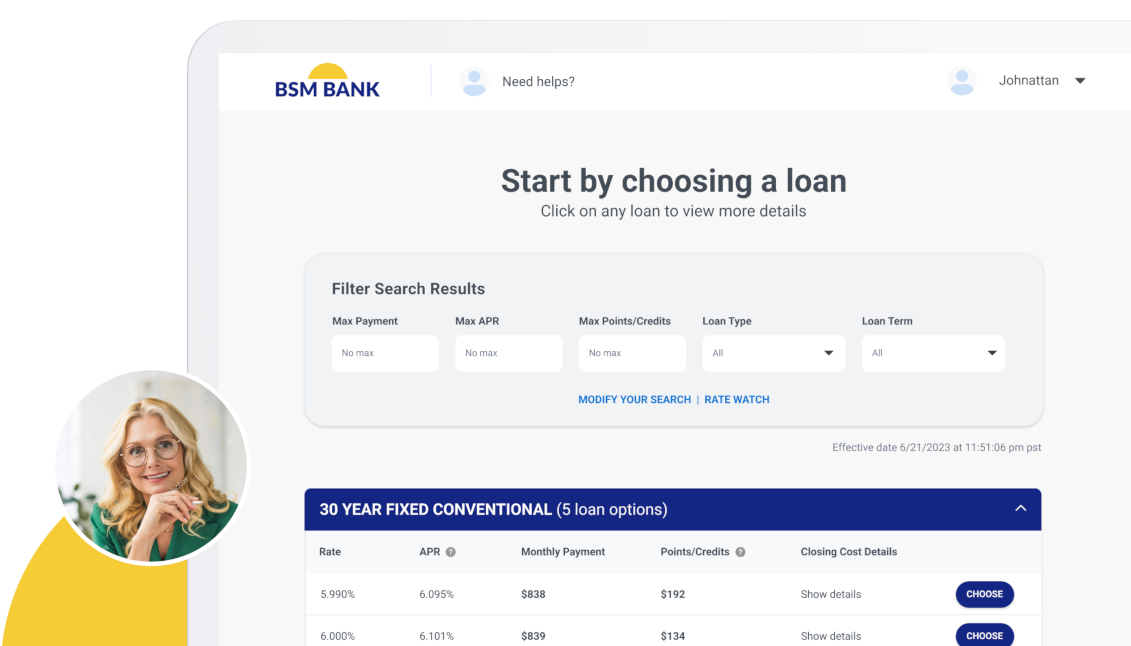LIBOR has long been the benchmark for loan interest rates for everything from home mortgages to student loans. The LIBOR rate may be phased out as early as 2021 and financial institutions have yet to prepare for the standard’s demise. Find out more about what LIBOR is, why it’s going away, the standards that may replace it and what impact that will have on the mortgage and lending industries.
What is LIBOR?
What does LIBOR stand for? LIBOR stands for the London Inter-bank Offered Rate. This is an interest rate used to determine the average rates submitted by London’s leading banks.
LIBOR Defined
LIBOR sets market expectations for the interest rates issued by central banks around the globe. It gauges the liquidity premiums for assets traded in money markets and indicates the overall health of the banking sector.
It’s the benchmark interest rate that banks charge one another for loans. Some of these loans are paid back overnight, while others have one-month to one-year terms.
What is LIBOR Used For?
Although the L in LIBOR stands for London, this interest rate standard has become significant to financial sectors far from England. In fact, it’s arguably the most significant number in finance. Mortgage lenders, banks and financial institutions use LIBOR as a basis to set their own rates. Credit agencies do the same. At any given time, there are trillions of dollars in various maturities with terms of one night to 30 years tied to the LIBOR benchmark.
What is the LIBOR Rate?
The world of finance sits up and takes notice when this benchmark changes. If you have an adjustable-rate mortgage or student loan, it’s probably embedded in the small print at the bottom of your contract. It also sets the trend for huge corporate loans, which underpin trillions of dollars in derivatives. LIBOR’s demise will send these organizations scrambling unless a new global standard emerges soon. In fact, the New York Times issued warnings as far back as 2018, citing banks that were continuing to base new loan products on the dying standard.
LIBOR Rate History
The LIBOR rate history involves a scandal exposed in 2012, according to Bloomberg. In one of the biggest financial stories since the financial crisis, investigators uncovered that the rate was being manipulated. This resulted in many arrests and billions in fines since the scandal went public.
In 2017, the UK Financial Conduct Authority removed the British Bankers Association from its LIBOR oversight role. The FCA also decreed that a new standard would have to replace LIBOR by 2021. So far, no standard has received the nod of the global banking community. However, the United States has developed the Secured Overnight Financing Rate (SOFR) as a viable option.
What Will Replace LIBOR?
Regulators may replace the London Inter-bank Offered Rate with SOFR by 2021, according to American Banker.
In 2014, the Federal Reserve Board met with the Federal Reserve Bank of New York to create an Alternative Reference Rate as a viable successor to LIBOR; SOFR was the strongest offering that came out of the meeting. While LIBOR is based on a small volume of transactions, SOFR comes from overnight reverse repurchase contracts in a deep, liquid market with many transactions.
Managing the Transition from LIBOR
The Securities and Exchange Commission has issued a public statement regarding the importance of finding a replacement for LIBOR. The Commission advises financial institutions to identify contracts that extend beyond 2021 to document their reliance on LIBOR past 2021. Since these contracts include provisions tying interest rates to LIBOR, stipulations must be made to replace that language in order to avoid disputes.
Subscribe to BeSmartee 's Digital Mortgage Blog to receive:
- Mortgage Industry Insights
- Security & Compliance Updates
- Q&A's Featuring Mortgage & Technology Experts
Here are some questions designed to help institutions determine their risk:
- Does the lender have LIBOR-based mortgage loans or other contracts that extend beyond 2021?
- What effect will the LIBOR discontinuation have on each of these contracts?
- Do any of the contracts have fallback language on what to do if LIBOR isn’t available?
- Can you renegotiate with the borrowers to clarify any contractual uncertainty?
- Are there any alternative reference rates to replace LIBOR? (Example: SOFR)
- Does the alternative reference rate require an additional spread to guarantee expected returns?
Writing of New Lending Contracts
New contracts should be written based on the new standard identified to replace LIBOR . Additionally, fallback language determining the calculation of interest rates should include a backup in case the new standard becomes obsolete.
Government-Sponsored Enterprises (GSEs) have adopted fallback language to include in ARM promissory notes and riders. The wording proposed by the Alternative Reference Rates Committee can be found here.
What Does this Mean for Adjustable-Rate Loans?
Top-rated conglomerates borrow over $4 trillion to maintain investments, acquisitions, cash flow and capital expenditure every year. Many of these loans roll over from year to year. An additional $12 trillion in long-term mortgages and other loans extend beyond 2021. More than half of them are anchored to LIBOR and the rest tie into LIBOR rates
This could culminate in a huge effort to update the contracts on this debt. Without an agreed-upon standard, companies and individuals from similar sectors may pay wildly different rates, which would disrupt the industry and create ripple effects throughout the economy.
Replacing LIBOR: What’s Happening Now?
Central banks around the world are vetting out a number of options to replace LIBOR with new benchmarks. These new benchmarks are known as risk-free rates (RFRs). Lenders and other institutions want to find a rate that reflects the credit market, based on real transactions. LIBOR became an easy target for manipulation when it moved away from actual loans and began using bank estimates about the cost of borrowing.
Besides the U.S.’s Secured Overnight Financing Rate (SOFR), the UK is offering the Sterling Overnight Index Average (SONIA), and the European Union wants to go with the Euro Short-Term Rate (ESTR).
LIBOR is based on loans of varying duration, such as monthly or quarterly terms. It incorporates forward-looking rates, which are based on market expectations. In comparison, the new benchmarks track actual transactions. For example, SOFR derives from the repo market in the U.S., rewriting existing loans to tie them to overnight benchmarks instead of quarterly rates, which may require pricing negotiations.
The financial industry needs to turn its attention to replacing LIBOR sooner rather than later. The repercussions for lenders, borrowers and industries that depend on these loans is enormous. Hopefully, we’ll see more high-level meetings involving the Fed and other officials that can move the process along.
Get updates from BeSmartee sent directly to your inbox! Subscribe to our newsletter here.




